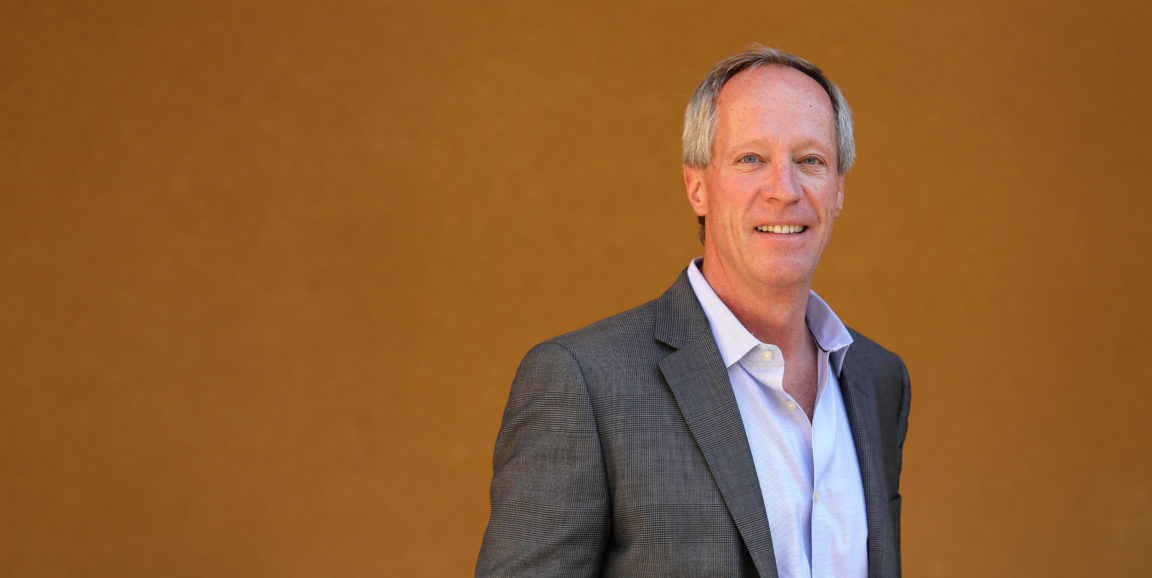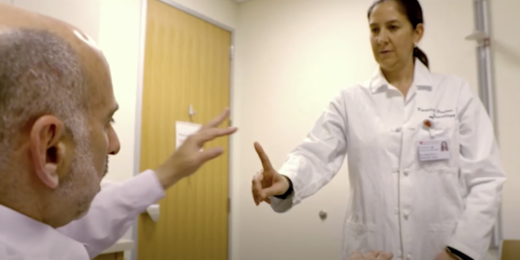Tom Krummel, MD, discovered medicine by accident. An inquisitive kid who read encyclopedias and built tree forts and go-carts, he entered college planning a career in science. On a whim, Krummel explained at a recent talk at the Fogarty Institute for Innovation, he attended a premed meeting one afternoon, and it launched a 35-year career as a pediatric surgeon, innovator, and leader.
In medical school, Krummel said his early thoughts of becoming a general practitioner vanished when he got his first look at human heart. “I didn’t leave the hospital for two weeks,” he said. “It was the early era of open heart surgery, and I was entranced by the immediacy of valve repair — you fixed it, and the patient got better.”
An experience during his residency launched what would become a career-defining interest in innovating to solve problems in care. Krummel explained that he was part of a surgical team that had operated to close openings in the diaphragms of two full-term newborns: a “mechanical solution to a mechanical problem.” But because the condition interfered with normal lung development, both children died despite the successful repair.
Frustrated, Krummel said he went to hear a young surgeon innovator, Robert Bartlett, MD, speak about a technique he was developing called ECMO (extracorporeal membrane oxygenation). This temporary bedside circulatory support had not worked well in adults, but had shown promise in infants with lung failure.
Krummel trained with Bartlett, who taught him how important it was for surgeons to understand basic engineering principles. Krummel took the advice to heart. Returning to his residency, he practiced the technique on sheep before trying it on six, gravely ill children. All survived. Krummel recalled that his longtime mentor and friend, Arnold Salzberg, MD, quipped, “Bartlett proved ECMO could be done; Krummel proved anybody could do it.”
In 1999, Krummel left his position as chair of the division of pediatric surgery at Penn State for an opportunity to lead and transform Stanford’s Department of Surgery. “They had a vision of capitalizing on the technology revolution that was beginning to flourish in Silicon Valley,” Krummel described. At the time, the department was significantly smaller and offered fewer clinical and educational opportunities. “I was overwhelmed by the problems, but dazzled by the possibilities.”
Over the next 16 years before stepping down in 2015, Krummel worked to enhance the department, recruiting gifted surgeons who were also great leaders. During his tenure, Krummel said he recruited more than 100 faculty members. “I knew the talent pool that was out there,” he said. “I did everything I could to get those top people, because you can’t go to the Kentucky Derby with Clydesdales.” At Stanford, Krummel explained, he also met Paul Yock, MD, who was launching a health technology training program for doctors and engineers. He became the co-director of that program, the Stanford Byers Center for Biodesign, to help train other aspiring innovators to solve problems in care.
Photo by Norbert von der Groeben




